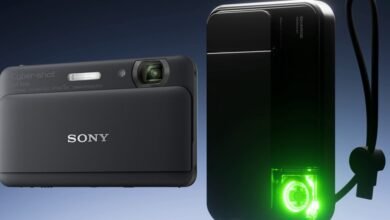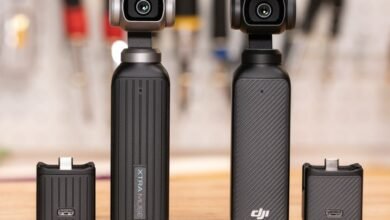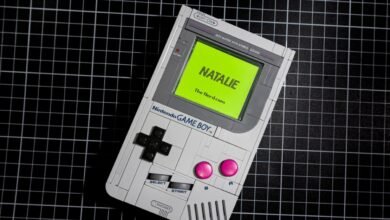GPD’s New Device Outsmarts the Steam Deck

▼ Summary
– The GPD Win 5 is the most powerful handheld ever, but sacrifices portability with prices from $1,600 to $2,200 and requires being plugged in or using a battery backpack.
– It features AMD’s Strix Halo chip, enabling it to play demanding games like Cyberpunk 2077 at 1080p and ultra settings with over 60fps, outperforming rivals significantly.
– The handheld has no internal battery, relying on an external battery backpack or direct power cord, making it lighter without the battery but heavy and short-lived when using the backpack.
– Battery life is extremely limited, with as little as 45 minutes at full power and loud fan noise, though power settings can be adjusted for longer play at reduced performance.
– This is an early prototype with issues like system hangs and buggy drivers, and it is currently crowdfunded on Indiegogo, not a final product ready for review.
The GPD Win 5 redefines handheld gaming by delivering unprecedented power through AMD’s Strix Halo chip, though this performance comes with significant trade-offs in portability and battery life. This premium device pushes boundaries with its unique design and capabilities, but its high price and reliance on external power sources may limit its appeal to a niche audience of dedicated gamers.
Resembling an oversized PlayStation Vita with metallic silver corners and a transparent D-pad, the Win 5 features a 7-inch 1080p display with 120Hz VRR that provides exceptionally smooth visuals. The standout component isn’t the comfortable ergonomics or the excellent D-pad, but rather the AMD Strix Halo processor that enables this handheld to outperform every current competitor. This same chip powers the Framework Desktop and represents the fastest integrated graphics available for gaming.
Powering this advanced chip requires either connecting to a wall outlet or attaching an external battery pack, since the device contains no internal battery. Initially, this design choice seemed problematic, but after extensive testing with an early prototype, the implementation proves surprisingly practical. The system allows users to play cord-free with the battery attached or remove the battery and connect directly to power for a lighter experience. These configurations unlock substantially more performance than typical handheld gaming devices.
While competitors have made incremental improvements since the Steam Deck’s debut three years ago, none have significantly advanced handheld gaming performance. The GPD Win 5 changes this dynamic by actually justifying its high-resolution screen with genuine 1080p gaming capabilities. Demanding titles like Cyberpunk 2077, Returnal, and Shadow of the Tomb Raider consistently achieved over 60fps at 1080p ultra settings without requiring upscaling or frame generation techniques. Even newer releases such as Expedition 33 and Indiana Jones and the Great Circle run smoothly at high specifications.
Performance comparisons reveal the Win 5’s substantial advantage. Against the newest retail handhelds like the MSI Claw 8 AI Plus and Lenovo Legion Go 2, the GPD device delivered two to four times better frame rates across multiple gaming benchmarks. This performance gap becomes especially noticeable at higher power settings that competing devices cannot reach.
This exceptional performance comes at the cost of massive power consumption. Where typical handheld processors operate at 15-35 watts, the Strix Halo can draw up to 60 watts on battery power and 80 watts when plugged in. With all system components active, total power consumption sometimes exceeded 100 watts. The optional 80 watt-hour battery provides less than an hour of gameplay at maximum performance, accompanied by significant fan noise that makes public use impractical. The unit weighs over two pounds with the battery attached, though it becomes considerably lighter at 1.25 pounds when operating cord-only.
Users can extend battery life by adjusting power limits downward, with the processor capable of operating at just 6 watts for over six hours in less demanding games. However, to achieve its performance advantage over competitors, the Win 5 must operate at higher power levels that dramatically reduce battery duration. Detailed performance comparisons show that while other handhelds might offer better efficiency per watt, the GPD device delivers superior frame rates when users accept shorter play sessions.
The prototype unit demonstrated several areas needing improvement, including system freezes during power setting changes, problematic touchscreen drivers, and mechanical issues with triggers. As a crowdfunded product from a smaller manufacturer, these early development challenges are expected. The device is currently available through Indiegogo rather than traditional retail channels.
Beyond its raw power, the Win 5 includes thoughtful features like a fingerprint reader integrated into the power button, hardware mouse mode switching, full-size USB connectivity, and modern SSD expansion. The overall package presents an intriguing proposition for gamers willing to sacrifice traditional handheld convenience for desktop-level gaming performance in a portable form factor.
(Source: The Verge)




